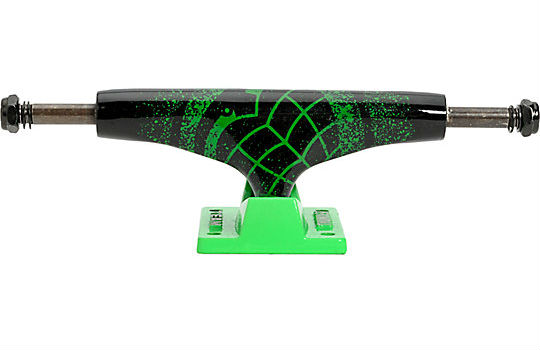There comes a point in every skateboarder’s life when he breaks his beloved skateboard or at least breaks some of its parts. If you haven’t broken the board itself, then you probably won’t have to worry about changing much. The wheels are the part that is most often changed, which makes many skateboarders disregard the fact that they should take care of the skateboard trucks as well. For the newbie skaters who have no idea what these pieces are – the skateboard trucks are the parts which hold the wheels. There are usually two trucks per set up, each one holding two wheels.

Skateboard trucks are usually durable and long-lasting, capable of withstanding the tear and wear of heavy grinding; at least the ones that reputable skateboard trucks retailers offer. Here are a few steps to help you pick the right skateboarding truck.
Choose the Right Type of Kingpin
The kingpin is what holds the truck and the skateboard together. It has one thick bolt and by fastening the bushings and the axle to the baseplate connector, it holds the whole apparatus together. The hefty screw runs down the center of the truck to the baseplate as I just said, and the bushings are sandwiched in order to shield the metal during movement and protect it from impact. For more resistance during turning, the kingpin can be screwed in tighter which will make turns stiffer.
When you assemble the kingpin, its head is fastened to the hanger and it faces the ground. The hanger is the part that skaters grind on, stall and perform other tricks. A lot of skates prefer having the kingpin situated flush with the other parts of the hangar, and this is a “high” kingpin truck. “Low” kingpin trucks are set deeper into the hanger, which leaves a gap in the surface area. The whole truck is lowered to allow more leverage in busting kickflips or popping ollies. Low trucks are used by technical skaters.
Study The Bushings
The bushings are a big factor as to how the board responds to your movement because they provide support between a lot of the pieces on the truck as it twists and turns during skating. Harder bushings offer more resistance to rider input – an important feature for technical and heavier riders who perform street tricks and don’t want a wobbly board. Softer bushings on the other hand, means more responsive trucks during turns, so if you’re more into carving and cruising, softer bushings are better for you.
Mind the Baseplate and Hanger
The baseplate is the flat part which mounts directly to the skate deck, making sure the pressure is evened out and the truck is secured. The baseplate is drilled with 4-6 mounting holes, which should match the insert holes of your deck.

The Hanger is the T-Shaped aluminium plated alloy grind onto which the wheels are attached and the kingpin runs up the interior, where it interlocks with the bushings. This is the part that will have direct contact with curbs and rails, so it’s important for it to be durable. The two things to be considered are the width and weight. The lighter they are, the more expensive they will be. When it comes to width, it’s up to personal preference.

